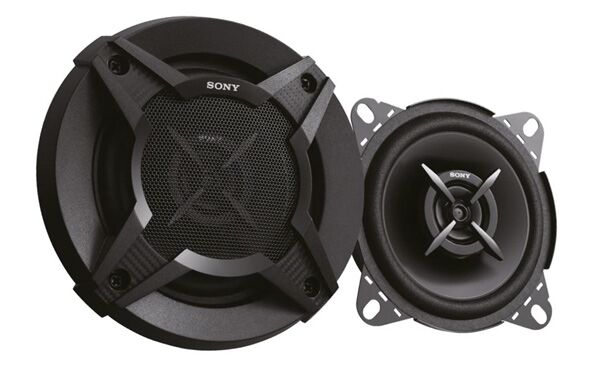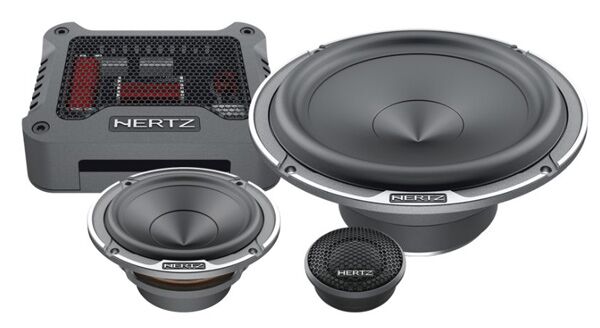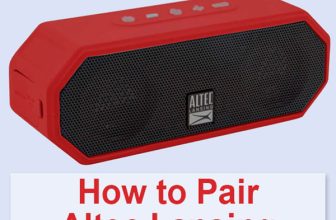Have you ever thought about why your speaker does not output the desired music as it should, being confident about its setting? What it lacks of? What kind of songs will be better displayed through it?
We’ll shed light on 2-way vs 3-way speakers and their differences. We’ll make sure that you pick the one that meets your needs paying just enough to get the correct speaker.
Table of Contents

2-way vs 3-way Speakers: Quick Comparison
The difference between two-way and three-way speakers lies on the surface in the names of these devices. Two-way speakers have two drivers, whereas three-way speakers have three drivers, respectively. These drivers are small speakers which produce different frequencies.
A 2-way speaker has a tweeter to deliver high-frequency sounds and a woofer to playback mid-range sound signals. A 3-way speaker gets three main components, two from a 2-way (a tweeter and a woofer), and one a subwoofer driver to cover lower frequencies, or simply to have a booming bass and drum output.

2 way vs 3 way Speakers Comparison
The former version gives out a fully balanced sound spectrum; thus, it is a regular preference of audiophiles. Nevertheless, this quality requires expenses, so be ready to splash out. As for its predecessor, an average music listener will pick this speaker due to its good sound quality and affordability.
If you need more specifics on this, please scroll down, we’ll give answers to all questions.

How Is Sound Created?
Music is composed of sounds, and sounds are made up of musical instruments (Joel Bakan, jazz musician, 2011). For the sake of hearing a complete sound reproduction, a speaker transforms electrical energy into mechanical, which is an energy of motion. So, it has an electromagnet that makes a cone move back and forth. The drivers, mentioned above, convert electrical current into air vibrations, which pull and push a cone creating sound. They are called drivers due to their ability to move or drive the air to generate sound. There is also a crossover, or a filter, which helps separate proper frequency ranges to corresponding drivers to avoid their damaging.
Human ears better react to mid-range sounds rather than to another. The overall audible spectrum is from 20 Hz to 20 kHz. That’s why the average speaker system consists of two different speakers: the one for mid-range frequency, aka woofer, and the other for high-frequency tunes, named as a tweeter. This kind of speaker is usually called a 2-way speaker. As for the one that can reproduce low-frequency sounds, it is a subwoofer and part of a 3-way speaker.
Features Face To Face
Now let’s get some details specifying the two speakers’ advantages and disadvantages.
What’s a 2-way Speaker?
As revealed above, a two-way speaker includes a tweeter driver responsible for high frequencies from 2 kHz to 20 kHz. The most recognizable musical instruments in this domain are the strings and winds, among them violins and cymbals.
Another driver that makes a speaker sound good is a woofer, which covers lower frequency ranges. In addition, it is mainly considered a mid-range driver as it accounts for the lengths of sound waves below the tweeter’s power. The instruments that fall in this range are keyboard, guitar, piano, and some wind instruments; also both males and females’ vocals.

The 2 way speaker
- portable enough to fit in the framework for a coaxial speaker, which has more than one speaker in the same box. The speakers produce sound on the matching axis;
- most have a passive crossover which separates a sound signal on different ranges without boosting it;
- occupies less space, so can be installed almost everywhere; for example, a compact bookshelf loudspeaker perfectly fits any table or shelf;
- comes with fewer materials as it is smaller, being affordable in price for most people.
- insufficient detail in bass and drum outputs;
- a woofer covers wide ranges for lower frequencies (from 20 Hz to 5kHz); thus making bass and mid-spectrum voices sound together, unlike in a 3-way speaker;
- narrowed sound quality.
What’s a 3-way Speaker?
This 3-way speaker system contains a tweeter to reproduce high-end frequencies, a woofer to get some mid-spectrum sounds, and a one more driver, a subwoofer, for low frequency notes.
So, the sound spreads out onto three drivers being separated by its frequency range. Due to a crossover, each driver gets a proper spectrum of sound waves. A tweeter holds a range above 2 kHz; for a woofer, it is between 200 Hz and 2 kHz; a subwoofer covers all below 200 Hz ranges, which is most common for deep tones.

The 3 way speaker
- due to three drivers, the sound is sorted out for each, so it plays back music of better quality;
- the presence of a subwoofer gives neat and pure sound quality, especially bass and drum become more noticeable compared to a 2-way speaker;
- there is usually an improved filter (crossover), which causes no distortion;
- needless to join any additional speakers.
- the differences in the design of coaxial two-way and three-way speakers are visually complicated;
- relatively big sizes require more material to build and cover a speaker;
- it’s more expensive than a 2-way device.
The Clash of 2-way vs 3-way Speakers
The main difference between these speakers hides in the drivers:
- A two-way speaker owns two types of drivers: a tweeter that takes over high-pitched sounds, and a woofer that holds intermediate frequency ranges.
- A three-way speaker has one more added driver, a subwoofer, that controls low-toned sounds. It was constructed in order to empower its lower frequencies by enhancing drum and bass.
Consequently, the former speaker gets better sound quality output covering a full range of sound, crossover setting that separates certain wavelength and directs it to an exact driver, and general speaker’s organisation. Thus, we’ve discovered what’s hidden inside each device. Now you know what your speaker potentially lacks in case of imprecise sounding.
Genuinely, testing a speaker system in different spaces is recommended before purchasing. 2-way and 3-way speakers will produce contrasting melodies in a vehicle. It’s worth questioning yourself about the size of a car’s interior and the power of reproduced sound. You may also need to estimate your preferences and expectations with an actual result.
2-way vs 3-way speakers: Which Is the Finest?
The answer is predictably clear that the more drivers are present, the better speaker is. However, it can be fictitious. The average listener may not notice the difference unless the speakers are put in non-typical conditions. Generally, all aspects impact the quality of sound output. The actual space and its size, the speaker’s setting, the quality of a crossover system, and, surely, the kind of displayed music.
Two-way speakers can be a good option as car speakers. They are smaller and thus take up less area; they fit into most frameworks, and do not reproduce deep-toned sounds, which might be disruptive while on the road (The corresponding research on The Effect of Low-Frequency Road Noise on Driver Sleepiness was done by Anna Anund at all in 2015). Furthermore, this type of device is a nice home theater choice. A two-way speaker system generates good voicing. Although, there won’t be an extreme sounding like in the cinema. Nonetheless, a 2-way speaker is affordable in price.
Three-way speakers can excellently serve as a car speaker system if you want to notice sound techniques in compositions that can cause goosebumps. Overall, on most occasions, this type of device is an ideal way out for open spaces. In addition, why not set it at home? Make a cinema in your house with all the horrified and mysterious sound effects in movies which excite the feelings and minds. Yet you’ll need to pay more for these functions than for its predecessor.
What Are Better Options For 2-way and 3-way Car Speakers?
As a remarkable two-way car speaker, we recommend trying the JVC CS-J620 Coaxial Car Speaker, which uses a Poly-Ether Imide dome tweeter for high-pitch tunes, which an average speaker doesn’t have, to reach a maximum frequency peak. The device featured a mica cone with a hybrid, rubber surround that makes it a good mid-range speaker. The output power is 30 watts allowing the user to link an amplifier to increase the delivery of sound in a car.
As an exceptional three-way car speaker, our advice goes to the Rockford Fostage 3-Way Full-Range Speaker. This device has integrated pass crossovers and mounting hardware. It’s featured a polypropylene cone with a silk dome pole mounted Piezo tweeter and mid-range enhancing the highs. The output power is 65 watts allowing the user to hear fantastic sound.
Conclusion
The choice between a 2-way and a 3-way speaker should rely on your own preferences and audio expectations. Considering that the prices vary and differ significantly between these two generations, it can be a solid factor while purchasing.
However, a true audiophile will take a 3-way speaker with no doubts in order to bring more light into listening to music. A regular user may like a 2-way speaker for its affordability and compact size. The choice is all yours.
FAQ
What speakers are best 2-way or 3-way?
Does a 3-way speaker sound better than a 2-way?
Do you need 3-way speaker if you have a subwoofer?
Is 2-way speaker good enough for bass output?
Related Posts
Michael Dixon
After earning a degree in sound engineering from Full Sail University, I've dedicated my life to the intricacies of sound. Over the years working with giants such as SVS and Harman/Kardon, I have expanded my knowledge and experience. As a tech enthusiast and author, I follow the latest developments and presentations in the gadget industry with great interest. Possessing 13 years of experience in the field of audio technology, I've cultivated a sharp acumen for identifying upcoming breakthroughs in this domain, and I take pleasure in imparting my perspectives to others. My goal is to provide readers with the most accurate and up-to-date information possible, as well as analyze the innovations and trends shaping the technological future.





